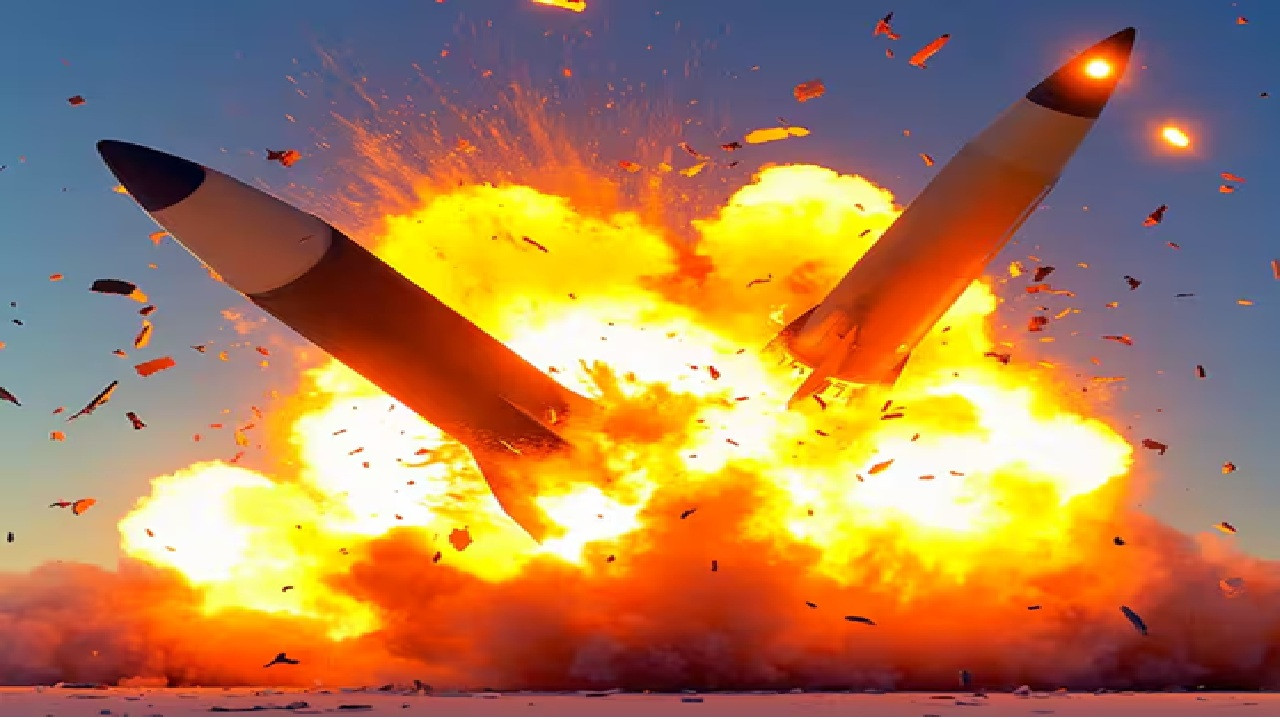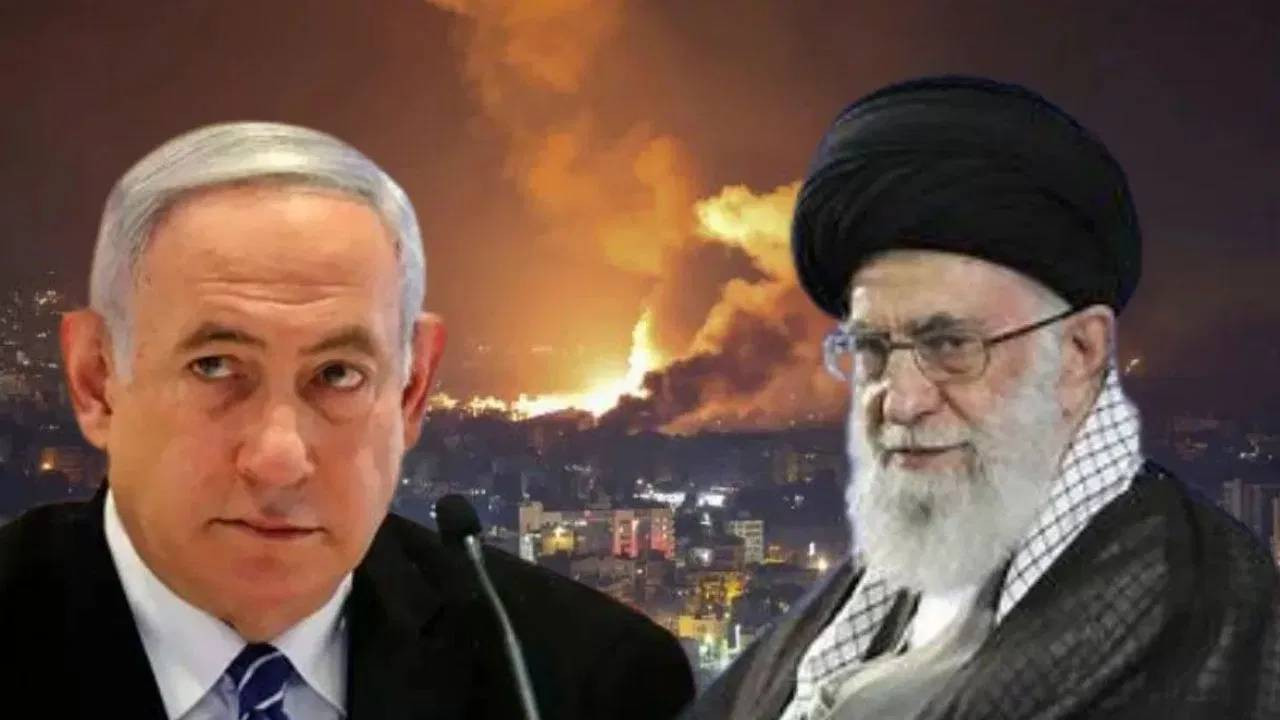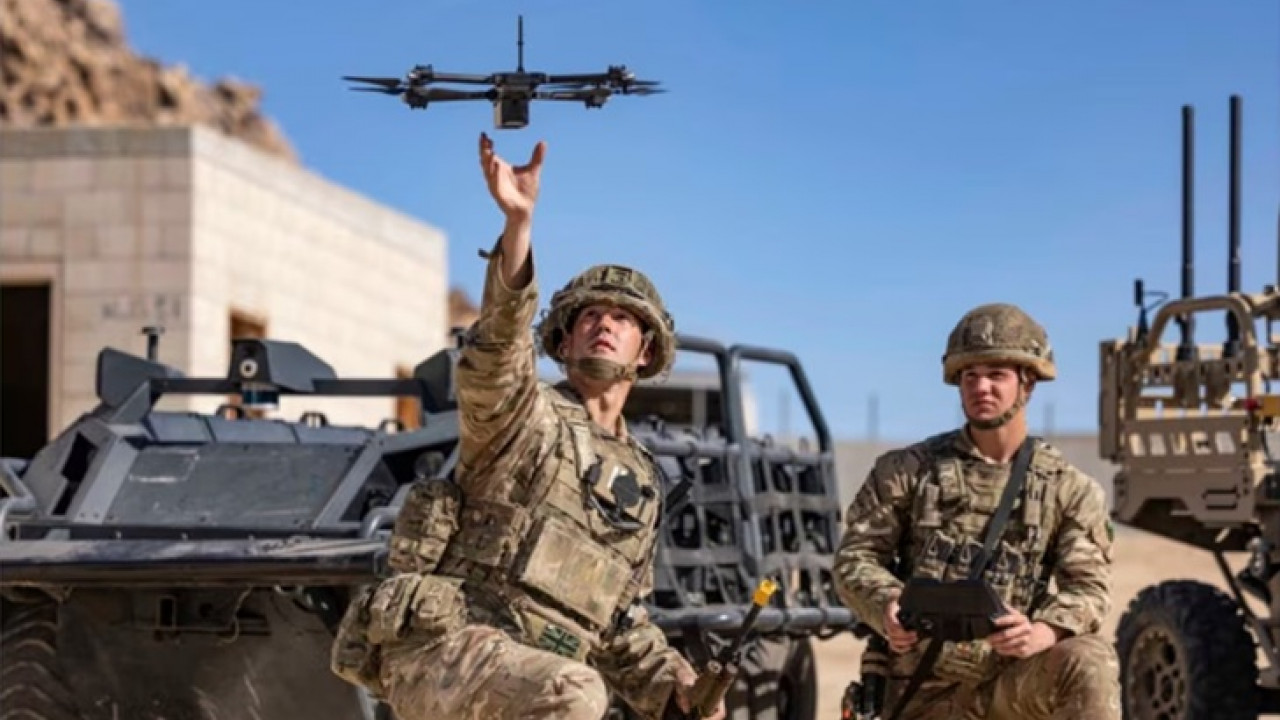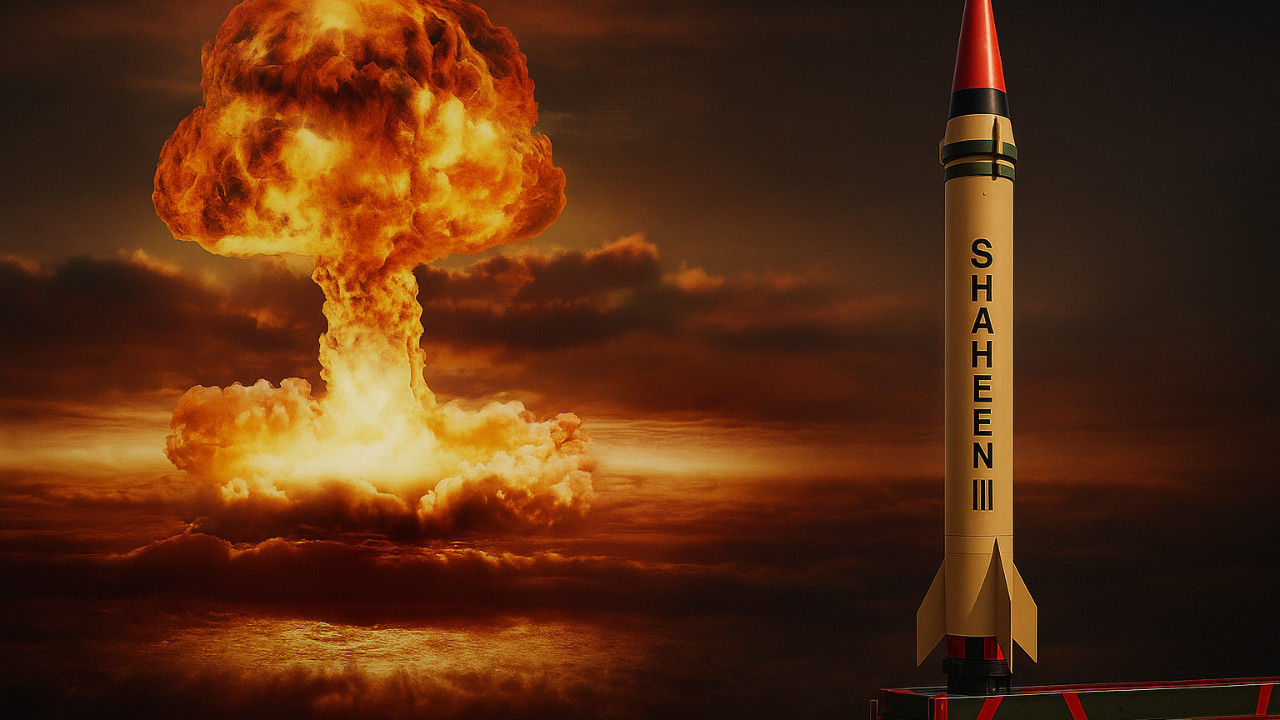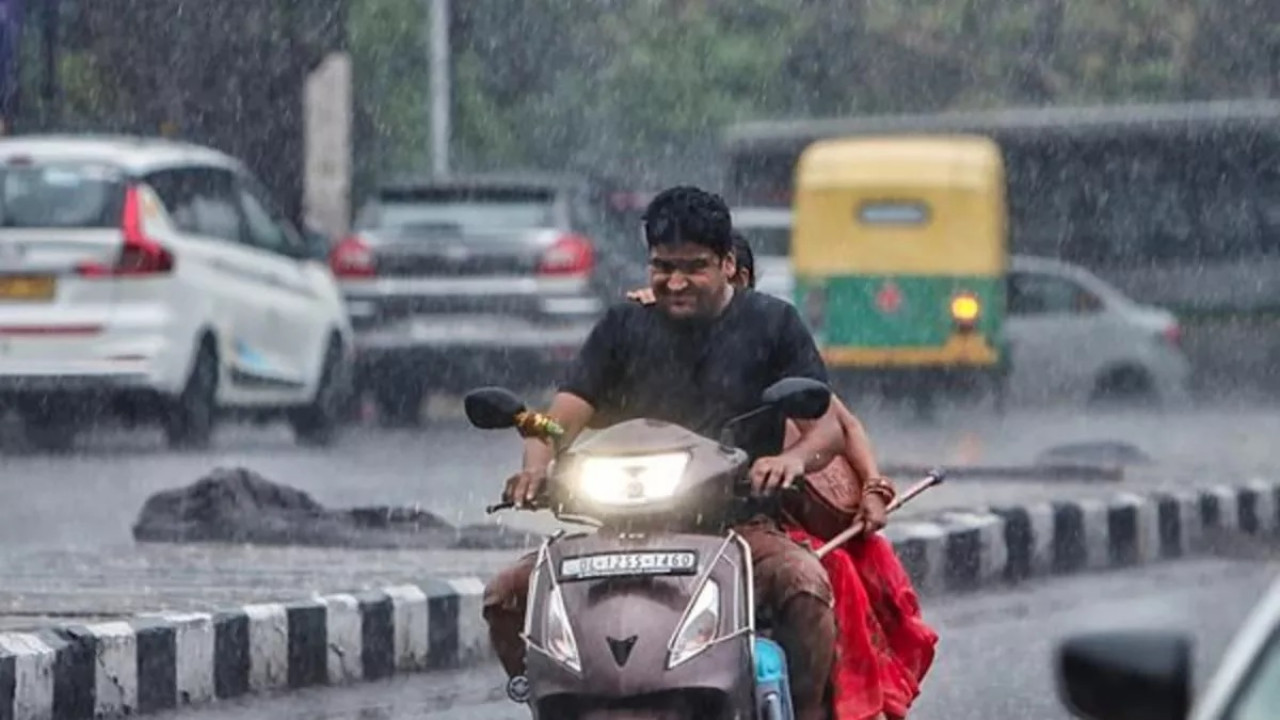International News: In the world of modern warfare and strategic defense, nuclear missiles are seen as the most fearsome and decisive weapons a nation can possess. There is a widely held assumption that if two such missiles were to collide mid-air, it would trigger a catastrophic nuclear explosion, spreading devastation across the earth. But how much truth is there in this notion? Can a collision in the sky between two nuclear weapons truly lead to a massive detonation?
The answer is far more grounded in science—and far less terrifying—than popular belief.
Can Nuclear Bombs Detonate on Impact?
Let’s start with the basics. A nuclear bomb is not like a grenade or traditional explosive—it cannot simply "go off" because of a crash. It is an intricately engineered device that only explodes under very precise conditions.
Nuclear weapons work through a chain reaction, typically using fissile materials like uranium-235 or plutonium-239. To trigger this reaction, a highly sophisticated mechanism must initiate a carefully timed implosion or compression of the core. This includes conventional explosives, timing switches, and precise alignment—none of which would happen during a random impact.
So, in simple terms, a mid-air collision between two missiles will not set off a nuclear explosion. The conditions required for a nuclear blast are simply too complex to be activated accidentally.
What Happens If Two Nuclear Missiles Collide in the Air?
Now imagine two nuclear-armed missiles colliding mid-flight. What would be the likely outcome?
- Conventional Explosion, Not Nuclear: The impact would likely trigger a non-nuclear explosion, as each missile may contain conventional explosive components for their detonation systems.
- Surface Damage: The outer shells of the weapons could rupture, and debris may scatter at high velocity. However, the nuclear core will almost certainly remain inactive unless the detonation mechanism is deliberately triggered.
- Self-Destruction Protocols: Most modern missiles are equipped with self-destruct mechanisms. If a missile malfunctions or is intercepted, it's designed to destroy itself before reaching the target—again, without activating the nuclear payload.
In short, a mid-air collision would be destructive but not apocalyptic.
Built-In 'Fail-Safe' Designs in Nuclear Weapons
Globally, nuclear weapons are built with multiple layers of security to ensure they cannot be detonated accidentally. This engineering philosophy is called “Fail-Safe Design.” Some of its key aspects include:
Launch Codes and Arming Systems: Nuclear devices cannot detonate without specific authorization codes and arming sequences held by high-ranking military officials.
- Anti-Tampering Features: If anyone attempts unauthorized access or tampering, the device becomes permanently inactive.
- Environmental Safety: The weapon is designed to withstand shocks, fires, and crashes without triggering a nuclear explosion.
This meticulous design makes it practically impossible for a nuclear device to explode simply due to an accident or collision.
Does That Mean There’s No Risk at All?
While a nuclear explosion is highly unlikely from a collision, some risks still remain:
- Radioactive Leakage: If the collision damages the nuclear core and the material disperses, radioactive contamination may affect the nearby atmosphere and environment.
- Shrapnel Hazard: Missile fragments from the high-speed impact could cause serious damage to other aircraft, satellites, or people and infrastructure on the ground.
- Political Consequences: If such an event occurs between two hostile nations, it could be misinterpreted as an act of war, potentially escalating into full-scale conflict.
Has Anything Like This Ever Happened?
There are historical incidents where nuclear weapons came dangerously close to unintended detonation. One of the most famous was the 1961 Goldsboro incident in the United States, where a B-52 bomber carrying two hydrogen bombs broke apart mid-air. One of the bombs initiated all but one step in the detonation sequence. Fortunately, the final fail-safe switch prevented disaster.
This chilling example demonstrates two things:
- The safety systems in place are effective.
- Human error or mechanical failure can still bring us alarmingly close to catastrophe.
What If—Hypothetically—Both Missiles Did Detonate?
While extremely unlikely, let’s explore a hypothetical scenario where a mid-air collision somehow causes both warheads to detonate:
- Airburst Effects: If the explosion occurs high in the sky, it won’t create a crater or localized blast like a ground detonation would. Instead, the shockwave and thermal radiation will spread across a wide area, causing widespread but more diluted damage.
- Electromagnetic Pulse (EMP): A nuclear airburst would generate a powerful EMP, potentially wiping out power grids, electronics, and communications over hundreds or thousands of kilometers.
- Casualties and Fallout: If this occurred over a populated area, the death toll could be massive. Even worse, radioactive fallout would affect the region for decades.
Final Verdict: More Myth Than Menace
The idea of two nuclear missiles crashing and causing a nuclear holocaust may be thrilling material for Hollywood films or sci-fi thrillers, but it doesn't hold much weight in the real world of physics and military design. Modern nuclear weapons are engineered with such high standards of control, safety, and security that accidental detonation via collision is virtually impossible.
That said, the incident could still trigger political panic, diplomatic crises, or even retaliatory military action if misunderstood. In that sense, the true danger is not in the science—but in the politics.
Caution Over Fear
Nuclear weapons are not toys of destruction—they are instruments of deterrence, engineered with complex systems to prevent accidental use. But the responsibility of owning them comes with the need for extreme caution, diplomacy, and ethical foresight. Instead of fearing accidental apocalypse, the world must focus on reducing tensions, fostering dialogue, and promoting disarmament. In the end, the most powerful weapon a nation can wield is not its arsenal—but its commitment to peace.


